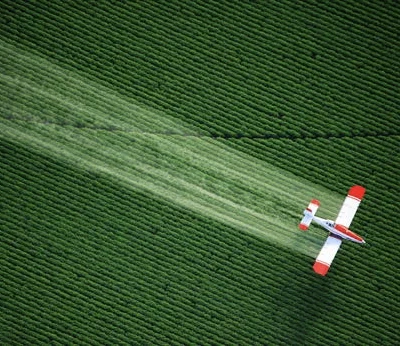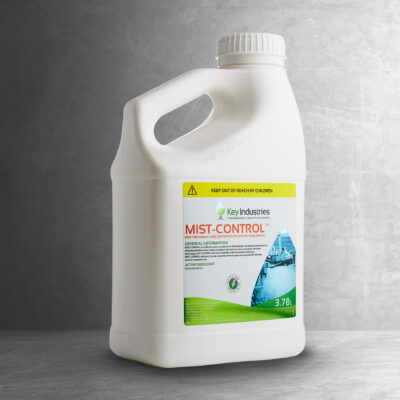MIST-CONTROL
Mist-Control improves deposition (up to 45%), which means more active ingredient on the target, less spray movement (Fines) and reduces evaporation by approximately 30% based on field studies. Downwind fall out is reduced by 60-70%
Contains: Polyvinyl Polymer
When pesticides are used on farms and in forests, the wind can carry droplets of the sprays quite a distance away from the targeted area, potentially causing severe damage to neighbouring crops as well as harming the environment.
Spray drift has wreaked havoc on wine grapes and kiwifruit in several New Zealand orchards recently, causing several hundred thousand dollars worth of damage.
Agrichemicals can cause severe damage to natural ecosystems, especially when they end up in surface waters, as most aquatic species can be very sensitive to these chemicals.
Spray drift exposes people and animals to harmful substances from pesticides. Some health risks linked to spray drift are asthma, watery eyes and skin rashes, polluted waterways and harm to native wildlife.
In 2019 and 2020, a local Hawkes Bay company was fined $14,000 and $14,400 respectively for illegal spray drift.

Follow the checklist for both organic and conventional sprays when spraying:
- Landowners and contractors are both responsible for spraying safely
- Know the rules, such as taking extra care around boundaries or water
- Use an experienced operator certified GROWSAFE®
- Notify people and use signs where required
- Take care spraying near sensitive areas and buffer zones
- Have a property spray plan as required
- Watch weather conditions and adapt as needed
Benefits and Application
MIST-CONTROL is an effective, easy to use product for drift retardation and deposition improvement in spraying operations. When used in accordance with label instructions and applied with sound technology, MIST-CONTROL will improve deposition within the intended swath area. MIST-CONTROL will reduce, but not completely eliminate, spray mist responsible for drift when used as a deposition aid.
MIST-CONTROL is exempt from registration requirements.
MIST-CONTROL improves deposition (up to 45%), which means more on the target, less spray movement (Fines) and reduces evaporation by approximately 30% based on field studies. Downwind fall out is reduced by 60-70%.
MIST-CONTROL will not reduce chemical activity/coverage although a slight increase in droplet size will occur when used at the correct label rates. MIST-CONTROL has not been noted to increase phytoxicity. MIST-CONTROL is formulated as a heat stabilised emulsion. This means it is user friendly and will not cause the common problems, as do other drift retardants when being applied. This includes stingy material in the tank and mucus like material hanging from nozzles after use.
MIST CONTROL is not as salt sensitive as some of the other materials and is more tolerant of hard water with no changes to spray tank viscosity.
Aircraft applicators will find an average swath increase of approx. 3 metres with the use of MIST-CONTROL
Rates: 0.25 – 1 litre per 100 litres of spray mix. Higher rates are for aircraft and high pressure spraying where drift can become even more significant.
Mixing Sequence:
Add wettable powders first then MIST-CONTROL followed by liquid pesticides. Ensure wettable powders are completely mixed before adding MIST-CONTROL. Ensure pH is below 11. If a pH reducer/buffer is required it should be added prior to MIST-CONTROL.
Additional products such as Foam Fighter and NuFilm should be added after Mist-Control.
If too much MIST-CONTROL is added to the tank then salt can be added to break MIST-CONTROL down.


